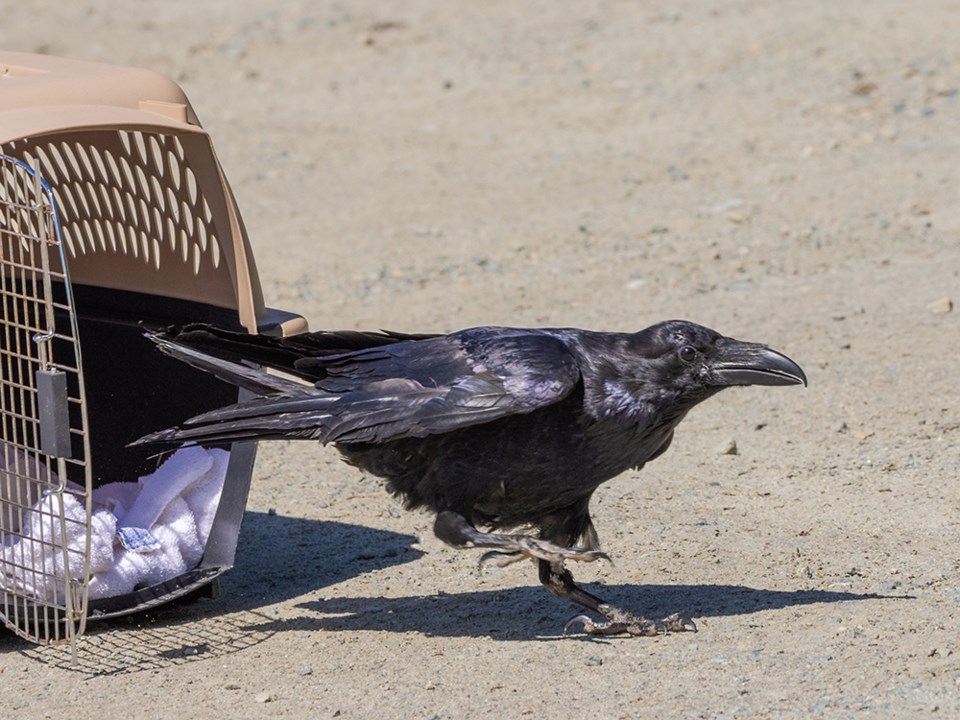NOT SO COMMON: Noticed lying by the side of the road near the Italian Hall, this lovely female adult common raven had been hit by a car.
Powell River Orphaned Wildlife Society was called and she was soon settled in a kennel. With one side badly bruised, scraped and bleeding, and all her feathers missing along one leg, she was obviously in pain even though she could still hop and fly.
Dr. Ian Barnes at Westview Veterinary Hospital confirmed nothing was broken. Confined for eight days, medicated and provided with food (kibble, hard-cooked egg, fish and venison) and water, the wounds healed.
Once able to stand strongly on a perch, she moved to the raven haven at Cranberry Lake, where she was soon flying well. Ready for release, she was scooped into the kennel yet again, this time for a trip to Gibsons Beach where, with a leap and a hop, she flew up into a nearby tree from where she will call for her mate. Ravens mate for life and we wonder about any nestlings.
The female raven will incubate three to seven eggs for about 18 days. The male and female both tend to the nestlings, who leave the nest at between five and seven weeks of age, sometimes hanging about the area like curious teenagers. Large groups of ravens are probably young birds that have yet to pair up.
Thriving among humans and in the deep woods, their easy-flowing wingbeats stretch across the sky. Ravens often perform aerobatics, including sudden rolls, wing-tucked dives, and playing with objects by dropping and catching them in midair.
Listen for a deep gurgling croak from far overhead and look for a long-tailed, glossy black bird flying on long wings with easy, graceful wingbeats. “Common” seems a most inadequate naming.



